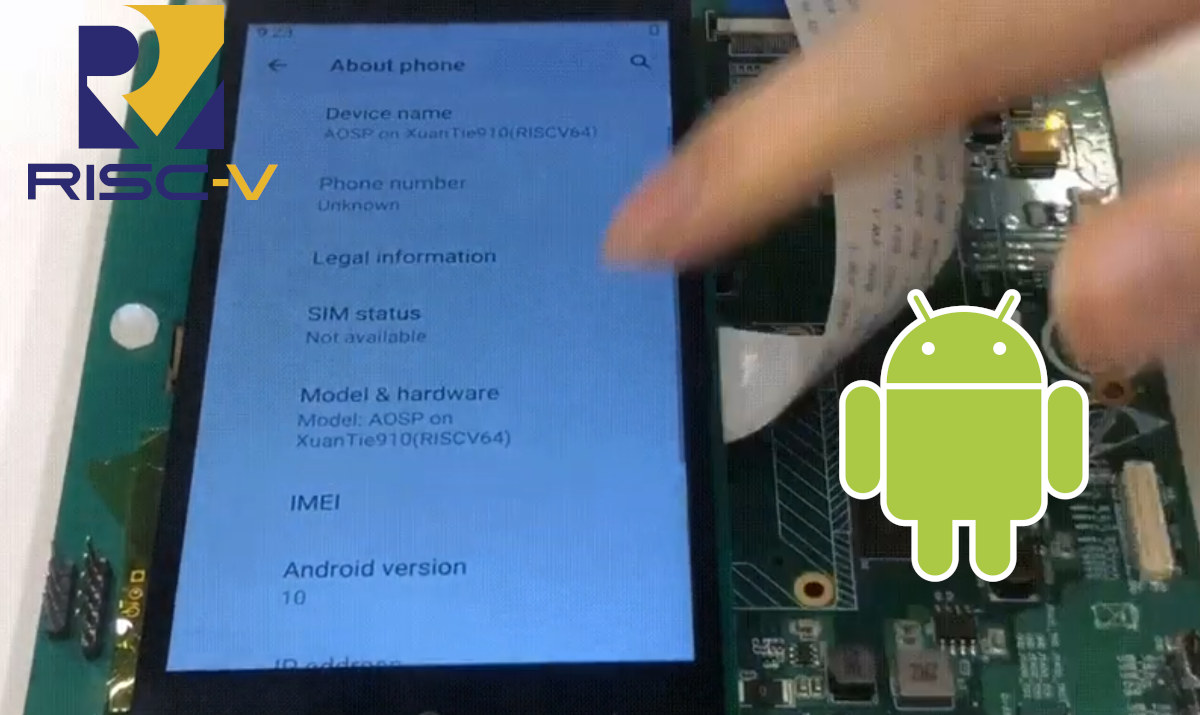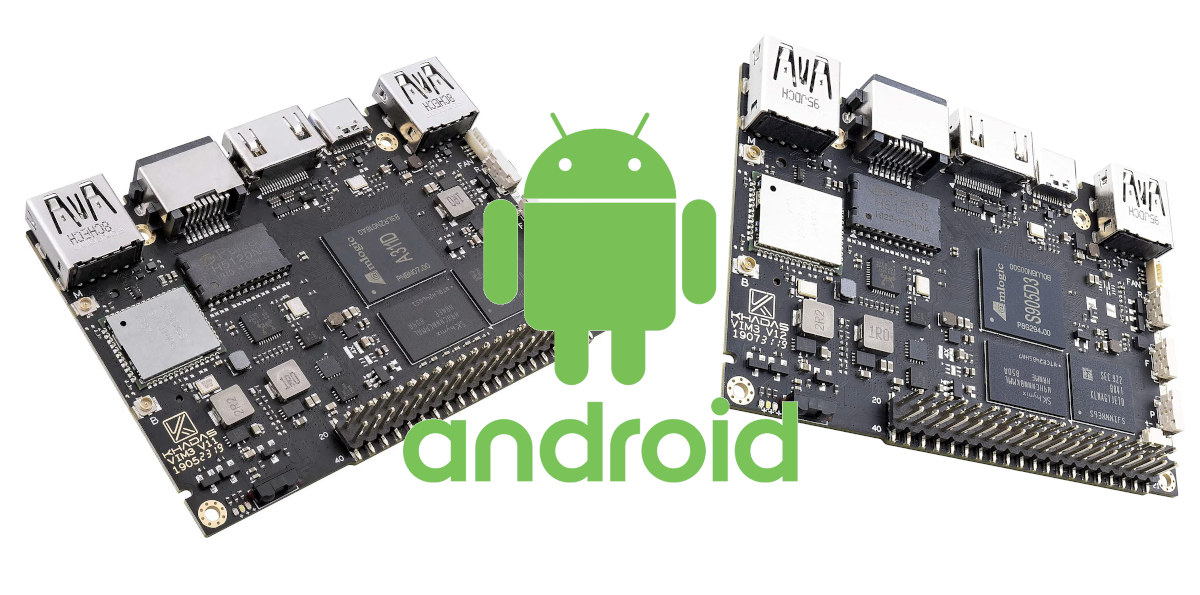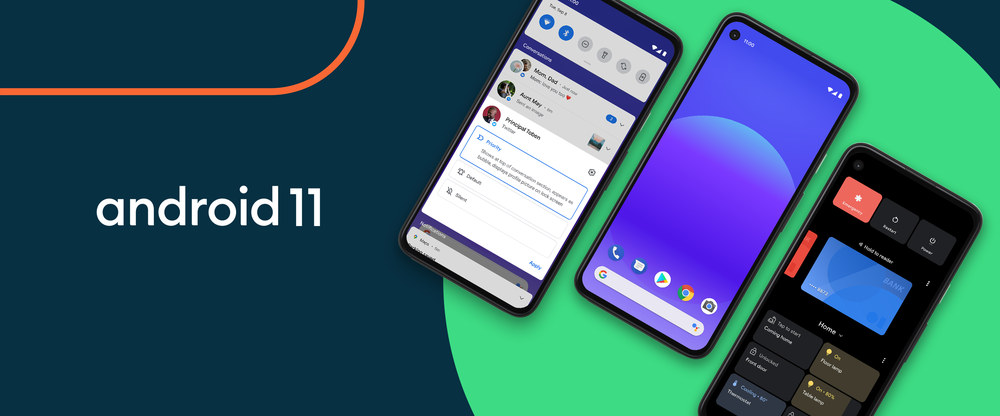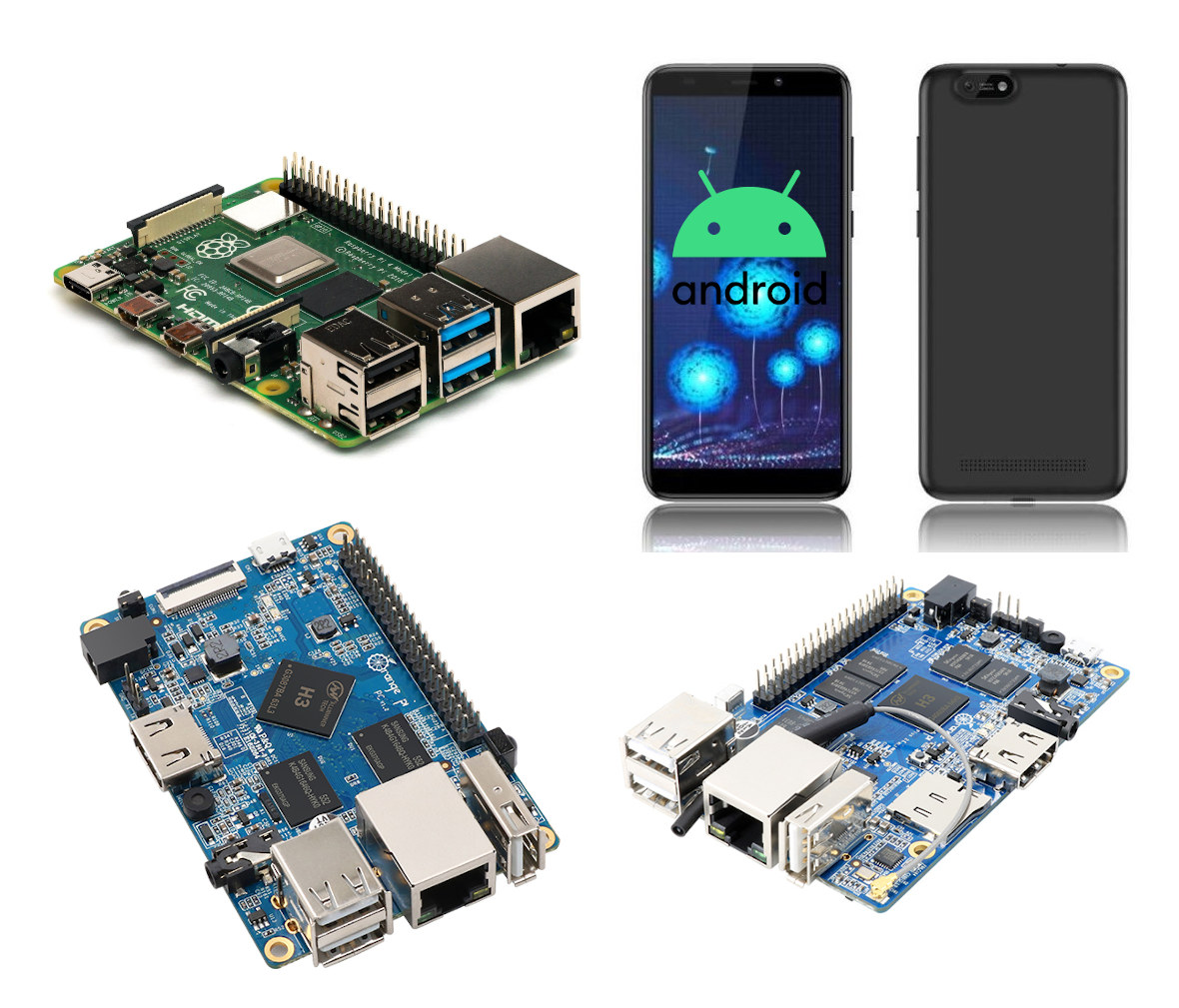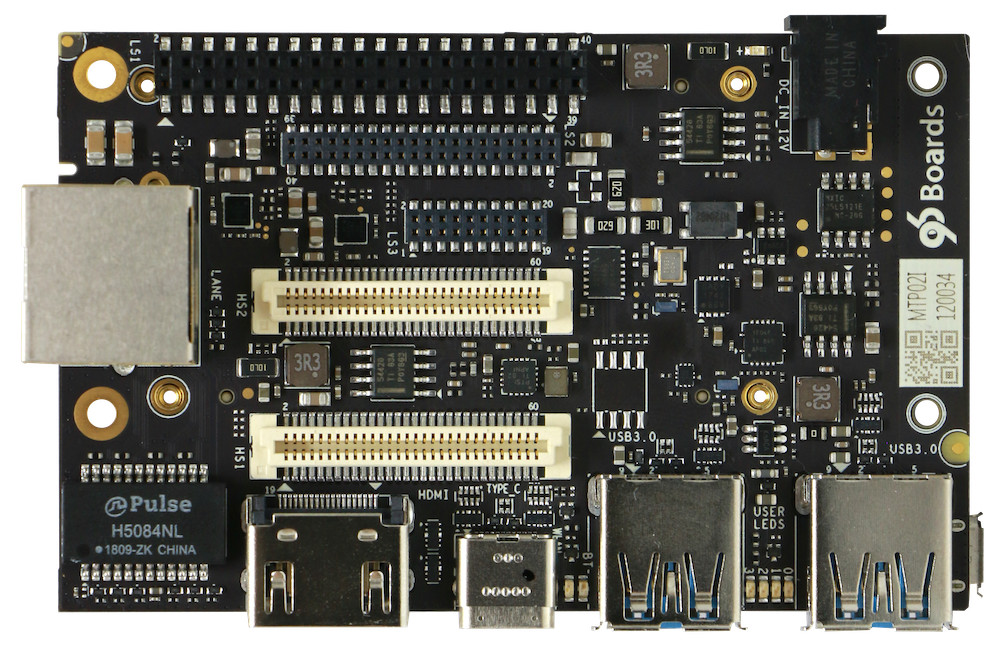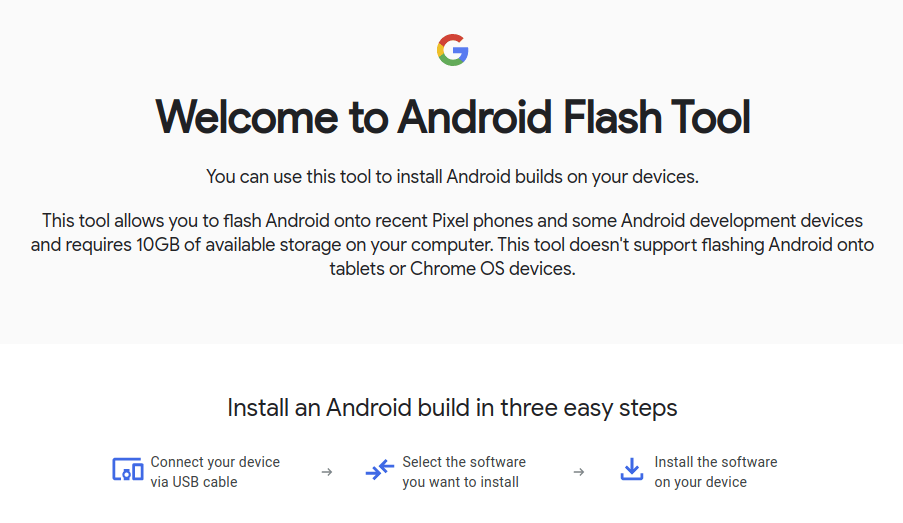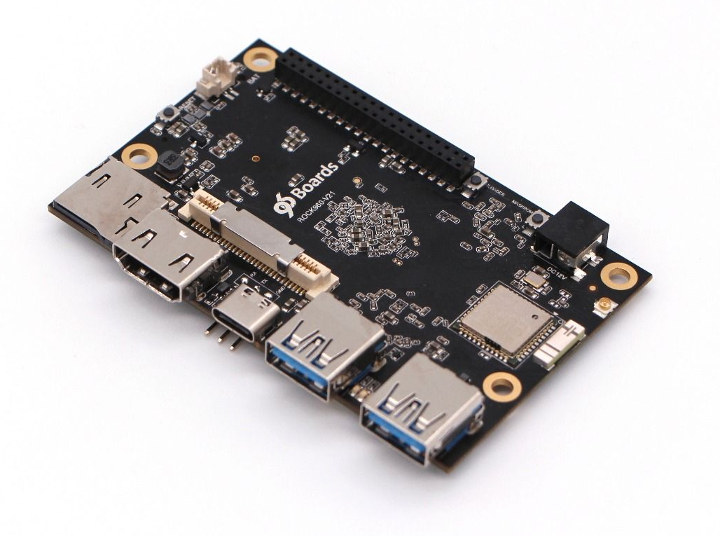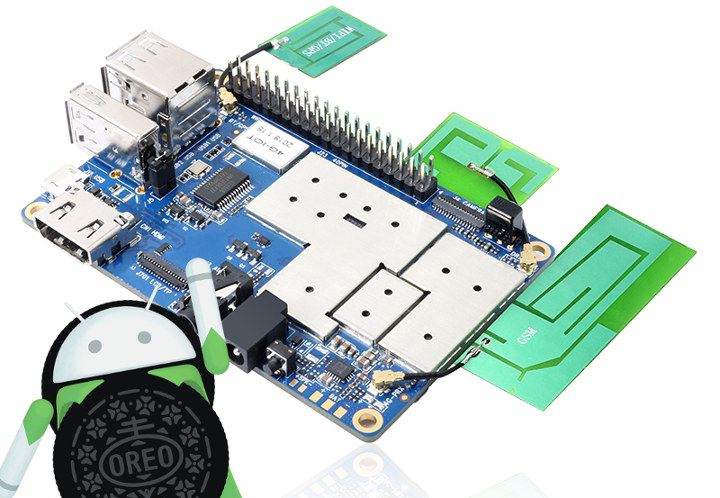RISC-V has made a lot of progress in just a few years, but for anything requiring 3D graphics acceleration, it’s not quite there yet. and we only expect RISC-V SoC with Imagination Technologies GPU to come out later this year on hardware such as BeagleV SBC. An OS that will definitely require 3D graphics acceleration is Android, and work has already started since T-Head, a business entity of Alibaba Group specializing in semiconductor chips, has already ported Android 10 (AOSP) on RISC-V architecture with support for graphics and the touchscreen display. The demo above runs on ICE EVB powered by a XuanTie C910 based high-performance SoC board developed by T-Head. Specifically, the ICE SoC integrates two XuanTie C910 cores (RV64) @ 1.2 GHz, one other XuanTie C910V core @ 1.2 GHz with vector extensions, a single-core 3D GPU core [Update: it’s a Vivante GC8000UL GPU], DDR4 memory support, a GMAC […]
Khadas VIM3 & VIM3L SBC’s become Android reference boards
If you need to work on the very latest development version of Android or AOSP, you can either get one of the supported phones such as Google Pixel 5, one of the reference boards for Android which should be better for development and also fairly cheaper. We previously reported about Hikey, Hikey960, and DragonBoard 845c single board computers being part of the short list of reference boards for the Android Open-Source Project (AOSP), but Amlogic powered Khadas VIM3 and VIM3L have recently been added to the official devices page which makes them the first AOSP reference boards with a dedicated NPU / AI accelerator. As a quick reminder, Khadas VIM3 is the most powerful board with an Amlogic A311D hexa-core Cortex-A73/A53 processor with up to 4GB RAM and 32GB flash, and Khadas VIM3L is the light version with an Amlogic S905D3 quad-core Cortex-A55 processor with 2GB RAM and 16GB flash. […]
Android 11 Release – People-centric Communication and “Pixel-First” Features
Six months have passed since Android 11 developer preview was released in February and at the time we noted enhancements for foldables and 5G, new call-screening APIs, new media & camera capabilities including animated HEIF support, as well as machine learning improvements. Google has now officially released Android 11 that is currently rolling out to select Google Pixel, OnePlus, Xiaomi, OPPO, and Realme phones. More phones will be upgraded/supported in the future, and Google also introduced some Pixel-first features that will (initially?) end up on Pixel phones exclusively. All Android 11 phones will support chat bubbles to message on top of other applications, built-in screen & audio, wireless Android Auto support with compatible cars, one-time permission for increased privacy, and more. But Google may have changed strategy trying to make Pixel phones more attractive to prospective buyers and increase sales as the Android 11 release comes with the following Pixel-exclusive […]
GloDroid Brings Android 10 OS to Raspberry Pi 4, Orange Pi SBC’s, PinePhone, and PineTab
The community of developers working on software for single board computers often prefer to focus on Linux support, as companies will often provide Android firmware images. But those Android OS images are often not maintained at all, so we’ve seen some projects like the past such as H3droid bringing a better Android OS to Allwinner H3 and H2+ boards and devices. The project is still using Android 4.4 KitKat and that’s getting old with some apps like the latest version of Kodi not working anymore. But a new project has just been brought to my attention with GloDroid leveraging AOSP to bring Android 10 to various Allwinner based boards and platforms, as well as Raspberry Pi 4B. List of supported Allwinner hardware: Allwinner H3 (32-bit) based – Orange Pi Plus 2 SBC, Orange Pi Plus 2E board, Orange Pi PC Allwinner H5 (64-bit) based – Orange Pi Prime, Orange Pi […]
DragonBoard 845c Android (AOSP) Reference Board Supports Open Source Graphics, Mainline Kernel
Besides the obvious Google Pixel and Nexus devices supported by AOSP (Android Open Source Project), we previously covered some single board computers that were also officially supported by the project with Hikey and Hikey 960 Android reference boards. Linaro Consumer Group (LCG) has just written about Qualcomm Snapdragon 845 based Dragonboard 845c board. It has been now an official Android reference board for a few months now, and it is the first such board with an open-source graphics stack thanks to Freedreno graphics driver and mesa framework. Since no proprietary blobs are required, the board’s full functionality can also be upstreamed into the mainline kernel, and Linaro currently uses the board as a test target for validating the mainline kernel and stable updates. Here’s a reminder of the board’s hardware specifications: SoC – Qualcomm Snapdragon 845 with 8x custom 64-bit ARMv8 CPUs up to 2.8 GHz, Adreno 630 GPU with […]
Google Android Flash Tool Allows You to Flash AOSP From a Web Browser
The Android Open Source Project (AOSP) and projects derived from it usually requires flashing the firmware from the command line. It works for developers for it may not be that convenient for end-users. Google Android Flash Tool aims to simplify everything by allowing people to flash AOSP from a web browser. Bear in mind there are currently some limitations. First, you need to have a web browser that supports WebUSB and right now it includes Chrome, Edge (driver required), and Opera. If you use Firefox, for instance, you’ll be asked to download Chrome. The tool does not work to flash Android into tablets or Chrome OS devices, and currently only works on recent Pixel phones (Pixel 2 or newer), and Hikey development boards. But if you have either of those you could enter the tool page, connect the phone or board to your computer via a USB cable, select the […]
Cost-Optimized Rock960 Model C Board Sells for $69 and Up
96Boards compliant Rock960 board launched last year for $99 with Rockchip RK3399 processor, 2 to 4GB RAM, 16 to 32GB eMMC flash for $99 and up. However, now you can buy a Rockchip RK3399 SBC for as low as $45 plus shipping thanks to FriendlyElec NanoPi NEO4 board that comes with 1GB RAM and no built-in storage, relying instead on a micro SD card slot or eMMC socket. So VAMRS decided to design a cheaper version of their board with Rock960 model C that still benefits from being part of the 96boards ecosystem, is equipped with 1, 2 or 4GB LPDDR4 RAM, and the OS can boot from a micro SD card or an optional eMMC flash module. The 1GB version of the board is now sold for $69 on Seeed Studio with shipping scheduled for the 1st of February 2019. Rock960 model C preliminary specifications: SoC – Rochchip RK3399 […]
Android 8.1 Firmware and SDK Released for Orange Pi 4G-IoT Board
When Orange Pi 4G-IoT board launched a few months ago, it shipped with a not so recent Android 6.0 operating system. But the good news is that Shenzhen Xunlong Software has now released Android 8.1 firmware for their Mediatek MT6737M quad core Cortex A53 LTE Cat 4 board, as well as the corresponding SDK. This makes it the cheapest Android 8.1 board with LTE connectivity available on the market so far as it goes for just under $50. The SDK is a large tarball (22.6 GB) split into 11 smaller files. It’s hosted on MEGA so download is fairly fast, but due to the size I had to install MEGA Sync software in order to download it easily. Once the download is complete, it’s not recognized in Nautilus, but you can extract the SDK as follows in a terminal:
|
1 2 3 |
cd 4G-IOT_Android 8.1 SDK cat x* > OrangePi_4G-IOT_Android8.1.tar.gz tar xvf OrangePi_4G-IOT_Android8.1.tar.gz |
This will take a while and extract over a million […]


